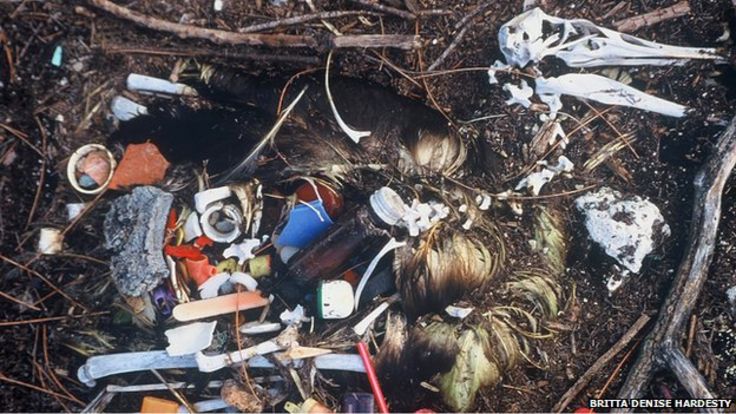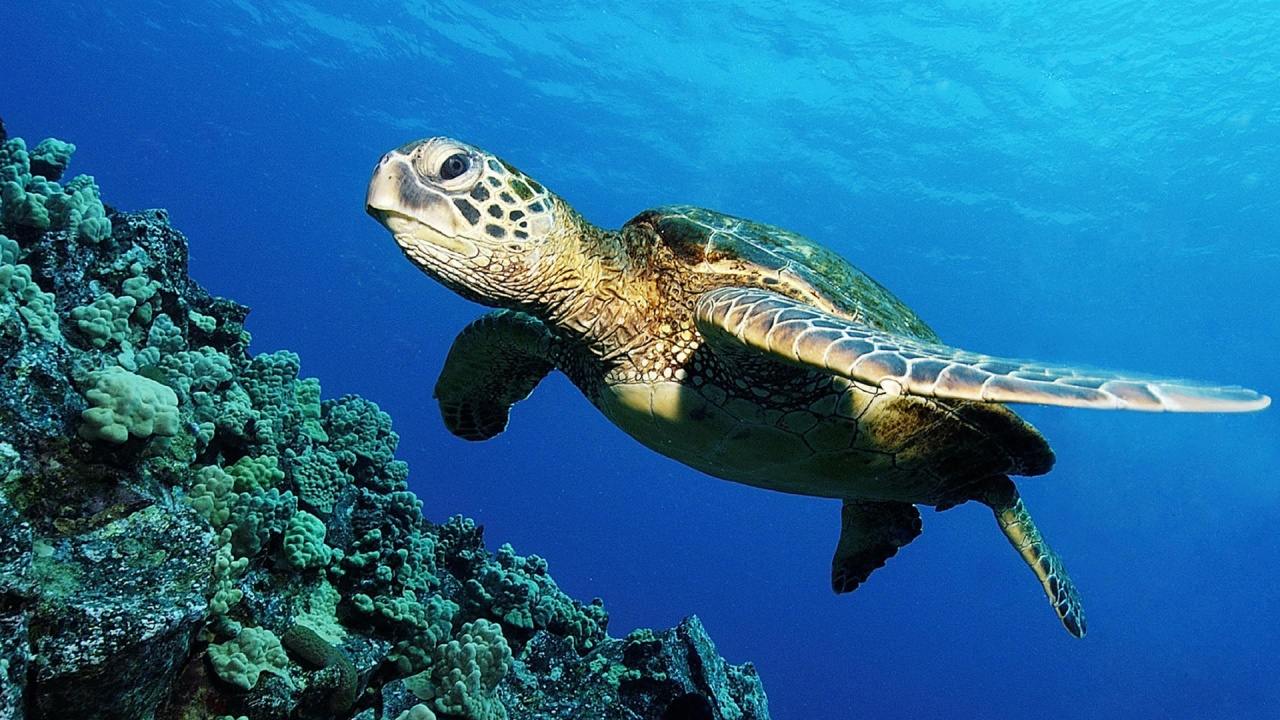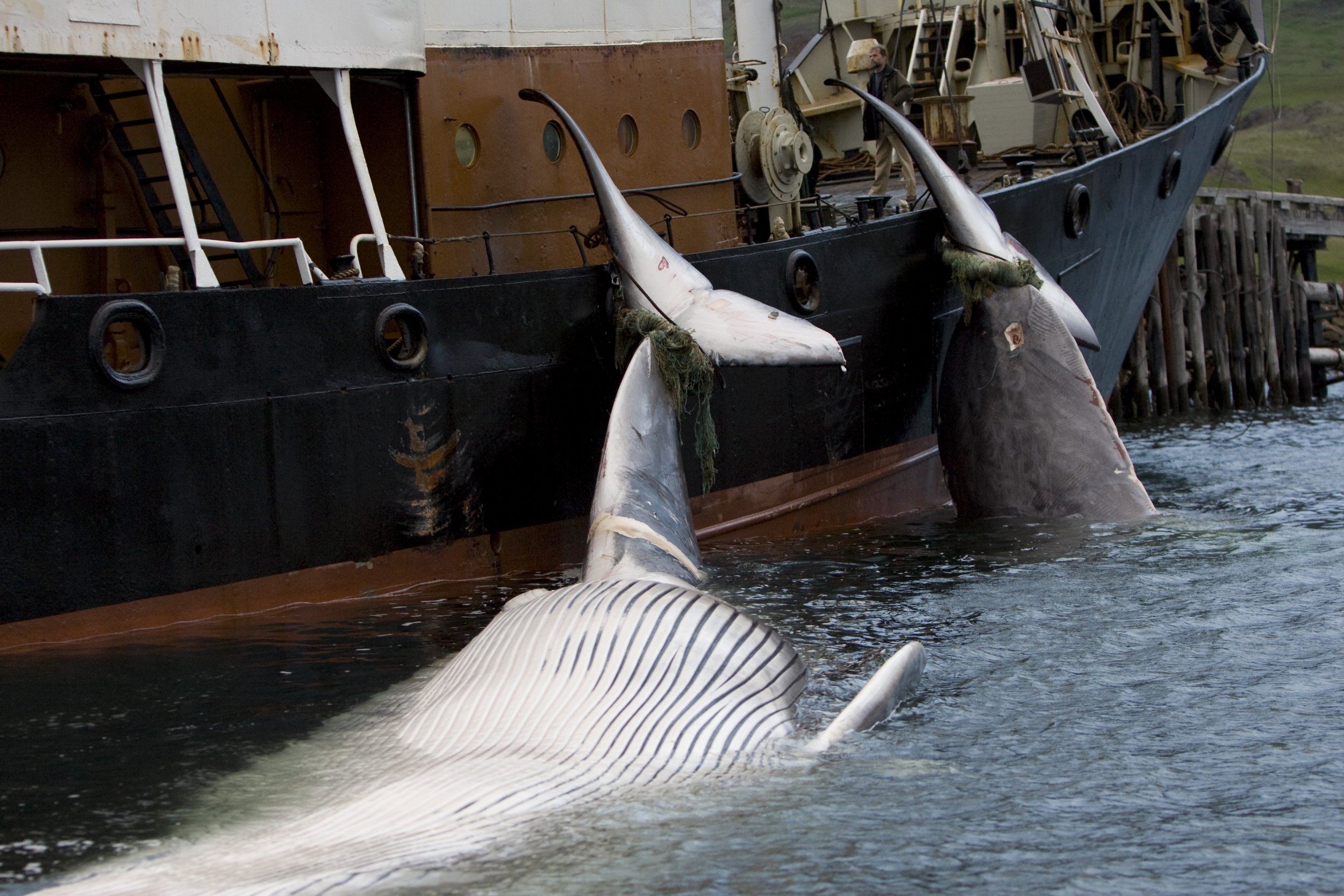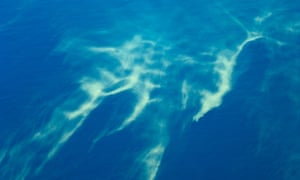
In 1960’s, fewer than 5% of sea birds were found with plastic debris in their system. Today, the number stands at around 90%. The largest number of afflicted seabirds are not in the area where the majority of floating plastic gathers but, where the seabird population is the highest, primarily in a band in the Southern Ocean, near Australia, South Africa and South America. “To the foraging bird, a discarded plastic cigarette lighter or a shiny bottle top can look like a fish”. Once this waste is ingested, it will destroy the animal’s digestive system. Read more…
 Hawaii, a state highly dependent on imported fossil fuel, is looking to the ocean as a source of renewable energy. The state plans to meet its goal of 100% renewable-energy by the year 2045. Hawaii inaugurated a small but operational ocean thermal energy conversion (OTEC) plant this week, making it the first in the world. The plant converts the temperature difference between the sea surface and deep waters into electricity. To learn more about the technology and energy production in the plant read here…
Hawaii, a state highly dependent on imported fossil fuel, is looking to the ocean as a source of renewable energy. The state plans to meet its goal of 100% renewable-energy by the year 2045. Hawaii inaugurated a small but operational ocean thermal energy conversion (OTEC) plant this week, making it the first in the world. The plant converts the temperature difference between the sea surface and deep waters into electricity. To learn more about the technology and energy production in the plant read here…
 The rare Allonautilus scrobiculatus, (a species of mollusk) has been spotted after 31 years off the coast of Papau New Guinea. Initially, this mollusk was misidentified by scientists who categorized it as a nautilus species. However, this mollusk has a really unique shell – its golden in color with thick, slimy hair. Peter Ward, a professor of earth and spaces sciences at the University of Washington came across the mollusk first in 1984. Ward reports that “ the Allonautilus is so rare likely because it is completely reliant on scavenging to survive”. The mollusk’s habitat is threatened by deep-sea mining operations, which could potentially wipe out the species. Read more…
The rare Allonautilus scrobiculatus, (a species of mollusk) has been spotted after 31 years off the coast of Papau New Guinea. Initially, this mollusk was misidentified by scientists who categorized it as a nautilus species. However, this mollusk has a really unique shell – its golden in color with thick, slimy hair. Peter Ward, a professor of earth and spaces sciences at the University of Washington came across the mollusk first in 1984. Ward reports that “ the Allonautilus is so rare likely because it is completely reliant on scavenging to survive”. The mollusk’s habitat is threatened by deep-sea mining operations, which could potentially wipe out the species. Read more…
5. Green Sea Turtle Record in Florida

The University of Central Florida (UCF) began work promoting the green sea turtle populations in the 1980s. As a result of this work, green sea turtles have back for 2 years out of three to lay their eggs at the beaches of Archie Carr National Wildlife Refuge. From 50 nests a year, the tally is now 12,026 nests along 13 miles of beach. The beaches are visited by green turtles, loggerhead sea turtles and leatherback sea turtles. UCF ensures that the beaches at Archie Carr refuge are hospitable for its ocean-visitors. Read more…
 In February, researchers from the United States and Cuba put a satellite tag on a rare longfin mako shark found in norther Cuba. Five months later, the shark was found 5,500 miles away off of the coast of New Jersey. It appears that the shark followed the Gulf Stream into the Gulf of Mexico, looped through the Bahamas, and then deep into the Atlantic Ocean. Scientists found that this shark traveled thought the same location as other mako sharks tagged in experiments. It is possible that this location is a mating or feeding hotbed. Read more…
In February, researchers from the United States and Cuba put a satellite tag on a rare longfin mako shark found in norther Cuba. Five months later, the shark was found 5,500 miles away off of the coast of New Jersey. It appears that the shark followed the Gulf Stream into the Gulf of Mexico, looped through the Bahamas, and then deep into the Atlantic Ocean. Scientists found that this shark traveled thought the same location as other mako sharks tagged in experiments. It is possible that this location is a mating or feeding hotbed. Read more…






